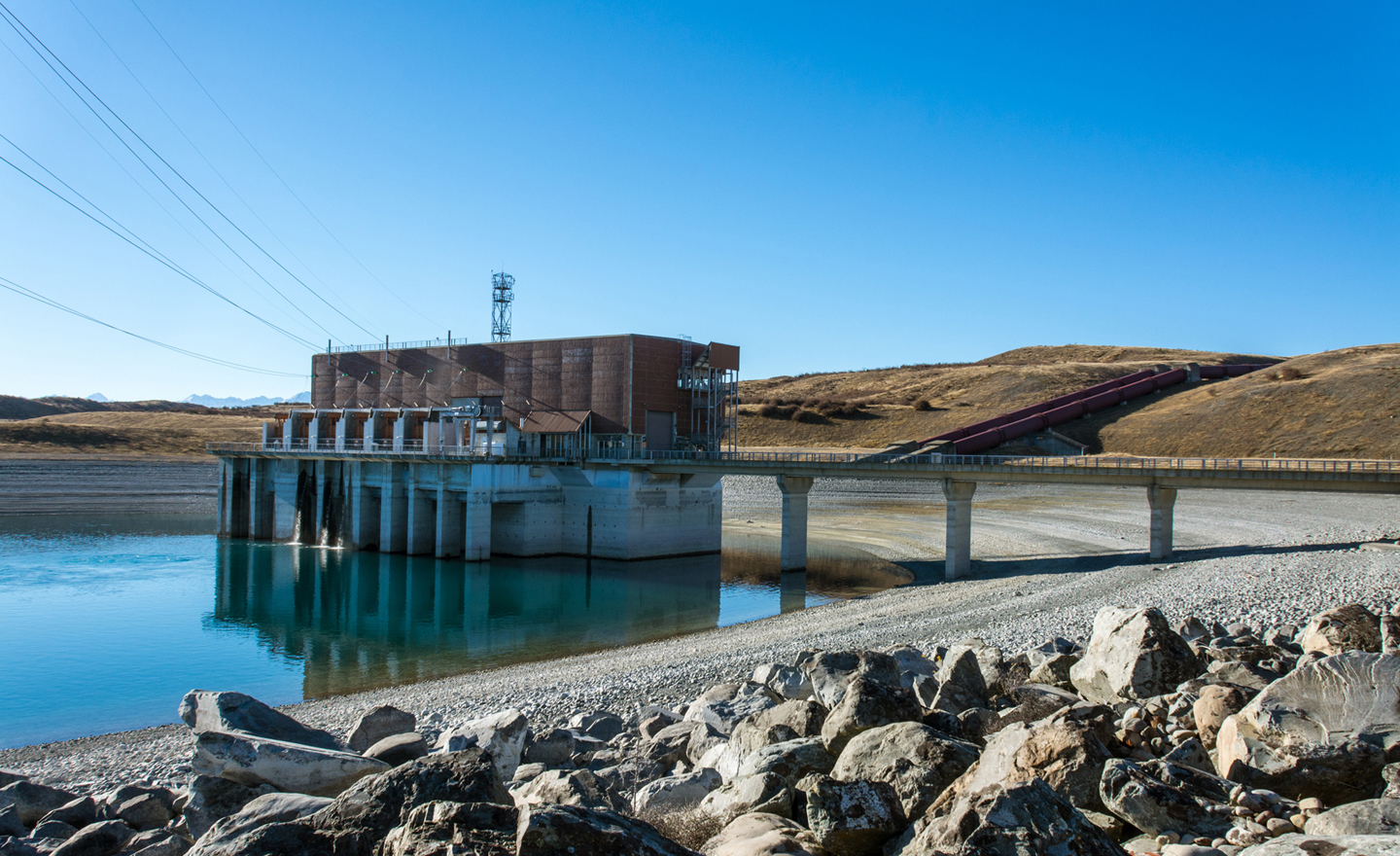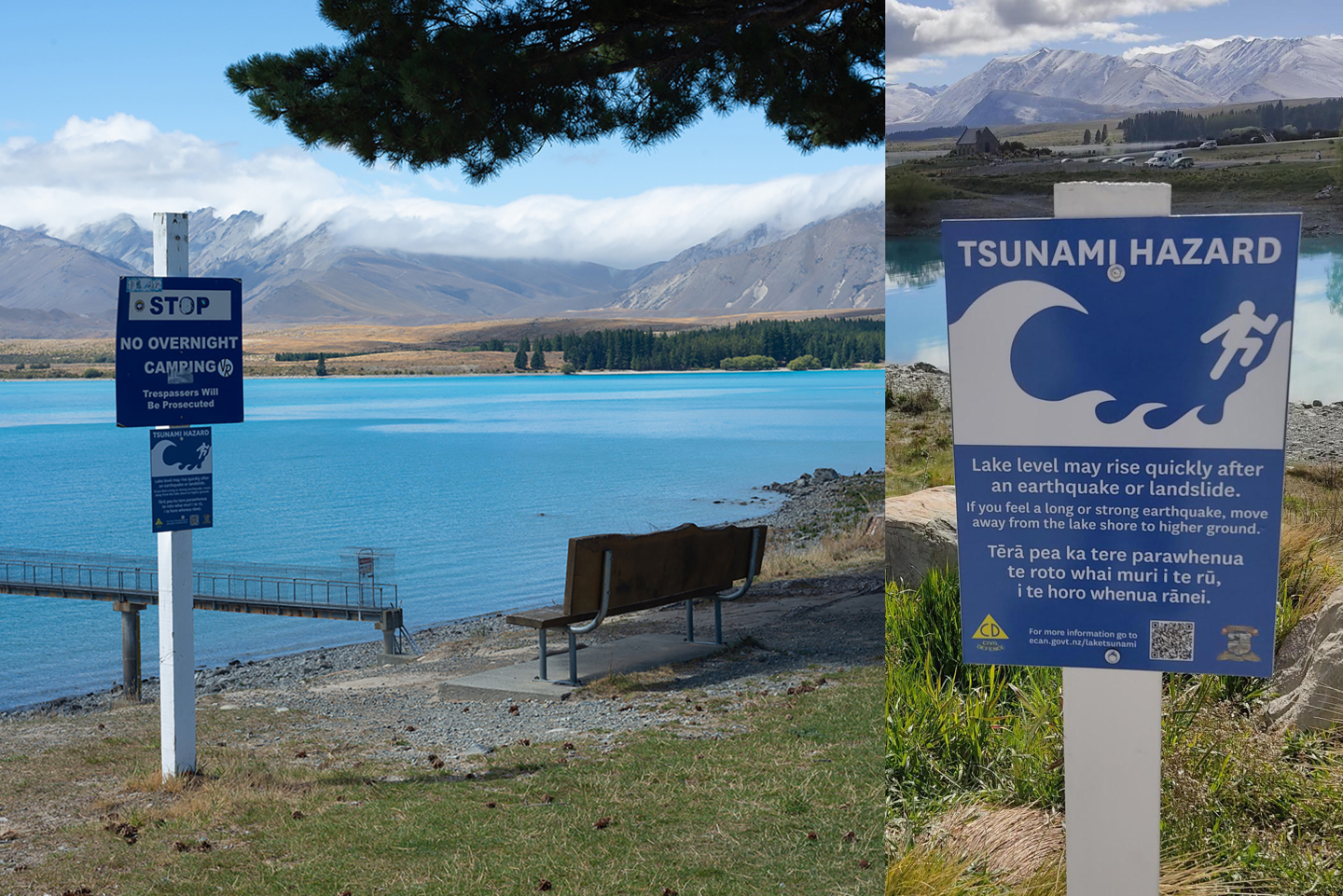
The Tekapo Hydropower Station (at Lake Pukaki) – the hydro-electric infrastructure will need to be carefully checked following a large earthquake felt in the district (Source: Shellie Evans, Flickr, 2017)
Speaking with Helen Jack made me realise that a potential tsunami is just one of a number of natural hazards that might affect the Mackenzie District, and New Zealand in general. That gives a real sense of context – a lake event will likely sit within the ‘bigger picture’ of a significant earthquake, and as a community we will be subject to numerous challenges in the aftermath of such an event.
Phill Mackay is Emergency Management Officer and part of the Canterbury Emergency Management Group. He knows only too well the diversity of natural hazards that can affect various regions of New Zealand, and was involved in the creation of the Lake Tekapo Community Resilience Plan. He explained what we might expect in the event of a large earthquake affecting the South Island.
“A tsunami might be another complicator that goes along with earthquake damage. Tekapo village is isolated, with one state highway in and out, so depending on where the earthquake is centred, isolation will be a big concern. We also need to think about infrastructure such as water, power, sewage or internal roading. Then we’d get down to individual damage to properties.” – Phill Mackay
One of the impacts that Phill mentioned is the potential loss of power. When I spoke to Kaley Crawford-Flett of the Civil and Natural Resources Engineering team at the University of Canterbury earlier in the series she explained the lengths that are gone to, to ensure the hydroelectric dams in the Mackenzie are as robust as possible. But she also talked through the numerous possible reasons that the power supply might be interrupted for a significant amount of time.
“It’s hard to anticipate how the different components will respond. If there’s a big earthquake and they’re worried about the power station itself or any of the conveyance structures to get the water down to the power station to generate the electricity, a lot of that will be automatically shut down, so generation might stop. After any natural hazard we would need to think very carefully about how quickly we reinstate generation and transmission. We’d likely have multiple cascading hazards – ground shaking, landsliding, liquefaction – so it’s hard to anticipate how all of the components would respond.” – Dr. Kaley Crawford-Flett

The Tekapo Hydropower Station (at Lake Pukaki) – the hydro-electric infrastructure will need to be carefully checked following a large earthquake felt in the district (Source: Shellie Evans, Flickr, 2017)
Again, we come back to this idea of trying to prepare for the unknown. It’s impossible to say what exactly we should do, as we just don’t know what is going to happen. That’s the principle behind the Lake Tekapo Community Resilience plan – equipping people with a basic awareness of the potential hazards around here, but not prescribing a specific course of action.
“The Lake Tekapo Community Resilience Plan identifies all of the natural hazards that Lake Tekapo might be exposed to and how individuals and businesses can be more prepared and a bit more resilient to get through an emergency event impacting the town.” – Phill Mackay
The key point here is the idea of ‘resilience’: the message to the community states what the hazards are, the capabilities to respond within the town (emergency services and response agencies) and what residents can do for themselves. The key messages are, as ever DROP, COVER, HOLD and LONG or STRONG, GET GONE. All of the information contained within the resilience plan is available via the Mackenzie District Council website.
Phill also emphasised the principle of knowing your neighbour, and knowing what equipment you might have available to you, that might be useful in an earthquake. He estimates that if the whole community pools together, enough resources should be available to last through the first 2 or 3 days after an earthquake. However, we should be prepared to be isolated for up to a week.
To find out about community plans in your area, check out you local CDEM website.
It’s even more important to be mindful if you’re visiting an unfamiliar area. Hopefully New Zealanders will have taken some measures to prepare for an earthquake wherever they’re from, but when travelling we should take care to think through the possible natural hazards that might be specific to that location.

Tsunami sign has been installed in the Mackenzie District to inform people of the potential hazard and how to stay safe (Source: Sam Lord and Bec McMaster, 2021)
The principle of carrying the knowledge and awareness with you is key – even if we’re on holiday somewhere unfamiliar, as long as we’ve got a base level of knowledge from our own preparations at home, that will hopefully stand us in good stead if the worst happens when we’re not in our usual surroundings.
My journey to understand the Mackenzie Lakes has revealed several fundamental messages. Firstly, that we’re never going to be able to predict exactly what hazard we will face, how that event might impact our daily lives, and how long for. The scientific investigations that are being undertaken are extremely useful in helping us try to narrow down the possibilities, but the onus is on us as residents and community members, to ensure that we’re as prepared as we can be.
And that links to the second taken home message: it doesn’t need to be complex or difficult to prepare ourselves for a natural hazard event. Something as simple as starting a family group chat to easily check in with each other following an earthquake could prevent a lot of stress and worry. Or storing our camping kit somewhere we can easily access it following an earthquake might mean that we can provide ourselves with shelter and a simple meal in an emergency.
We are so lucky to be able to live in and explore this amazing country. But we must keep in mind that the environment is dynamic and continues to evolve. So, whilst we’re out and about enjoying the beautiful scenery, we should give some thought to how we keep ourselves and each other safe.
For advice on how to prepare for earthquakes and tsunami, check out the links below.